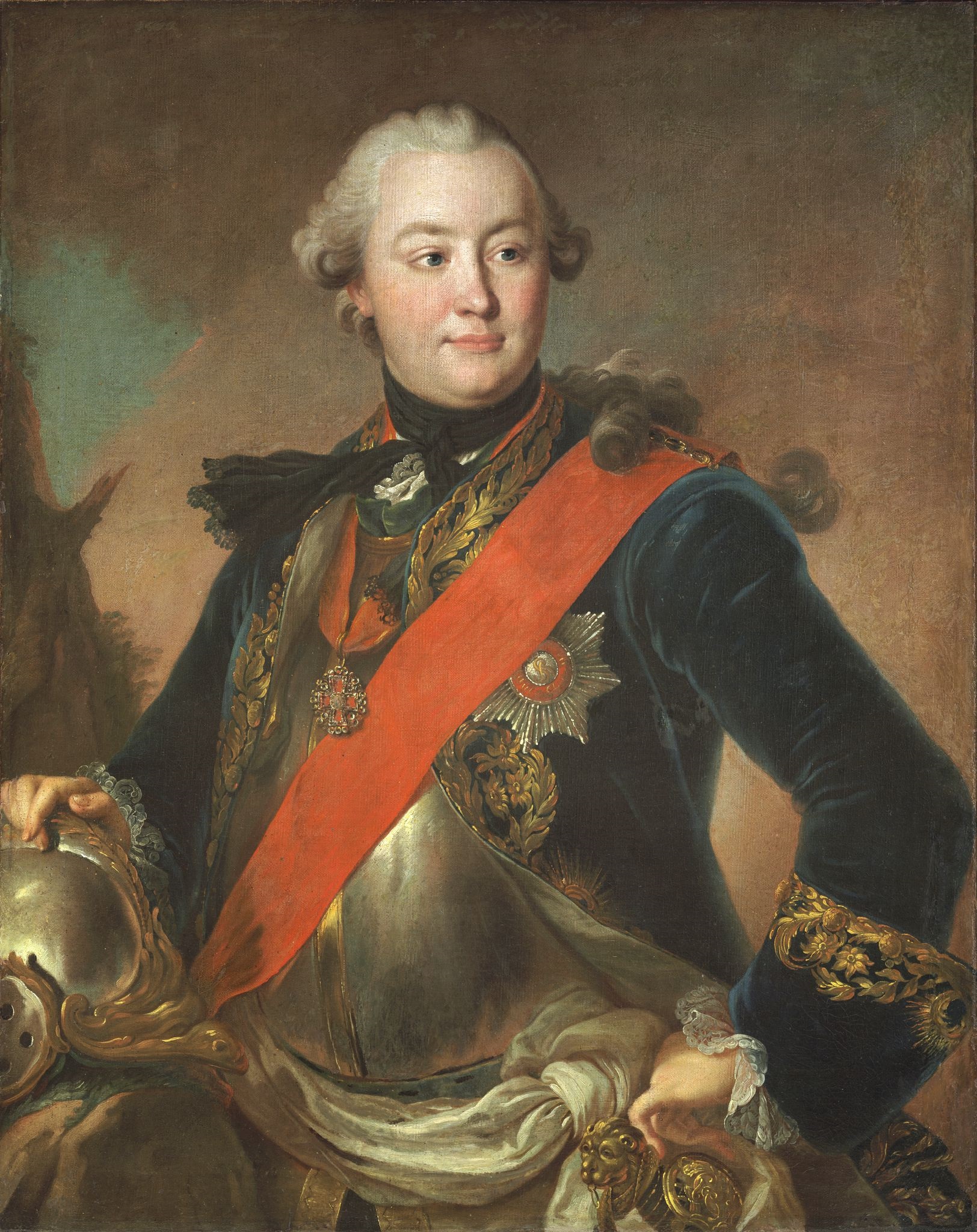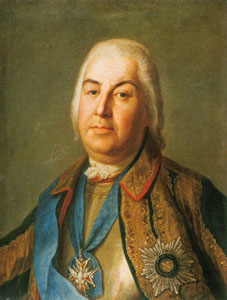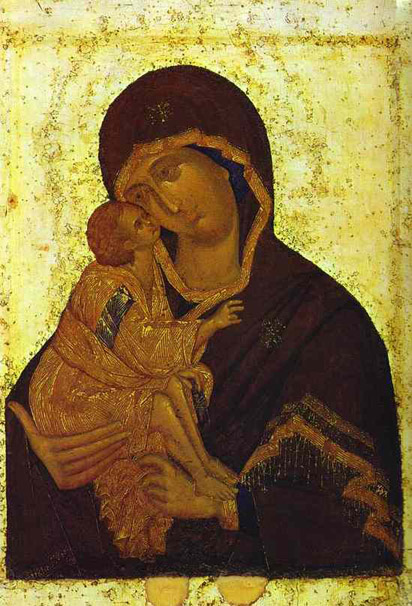|
Moscow Plague Riot Of 1771
{{noref, date=July 2012 Plague Riot (''Чумной бунт'' in Russian) was a riot in Moscow in 1771 between 15 and 17 September, caused by an outbreak of bubonic plague. History The first signs of plague in Moscow appeared in late 1770, which would turn into a major epidemic in the spring of 1771. The measures undertaken by the authorities, such as creation of forced quarantines, destruction of contaminated property without compensation or control, and closing of public baths caused fear and anger among the citizens. The city's economy was mostly paralyzed because many markets, stores, and administrative buildings had been closed down. All of this was followed by acute food shortages, causing deterioration of living conditions for the majority of the Muscovites. Dvoryane (Russian nobility) and well-off city dwellers left Moscow due to the plague outbreak. The first outbursts of mass protest against the measures undertaken by the authorities took place on 29 August and 1 Sep ... [...More Info...] [...Related Items...] OR: [Wikipedia] [Google] [Baidu] |
Red Square
Red Square ( rus, Красная площадь, Krasnaya ploshchad', ˈkrasnəjə ˈploɕːətʲ) is one of the oldest and largest squares in Moscow, the capital of Russia. Owing to its historical significance and the adjacent historical buildings, it is regarded as one of the most famous squares in Europe and the world. It is located in Moscow's historic centre, in the eastern walls of the Kremlin. It is the city landmark of Moscow, with iconic buildings such as Saint Basil's Cathedral, Lenin's Mausoleum and the GUM. In addition, it has been a UNESCO World Heritage Site since 1990. Location The Red Square has an almost rectangular shape and is 70 meters wide and 330 meters long. It extends lengthways from northwest to southeast along part of the wall of the Kremlin that forms its boundary on the southwest side. In the northeast, the square is bounded by the GUM department store building and the old district of Kitai-Gorod, in the northwest by the State Historical Museum a ... [...More Info...] [...Related Items...] OR: [Wikipedia] [Google] [Baidu] |
Grigory Orlov
Prince Grigory Grigoryevich Orlov (russian: Князь Григорий Григорьевич Орлов; 6 October 1734, Bezhetsky Uyezd – 13 April 1783, Moscow) was a favourite of the Empress Catherine the Great of Russia. He became a leader of the 1762 coup which overthrew Catherine's husband Peter III of Russia and installed Catherine as empress. For some years he was virtually co-ruler with her, but his repeated infidelities and the enmity of Catherine's other advisers led to his fall from power. Overthrow of Peter Orlov was the son of Gregory Orlov, governor of Great Novgorod. He had a younger brother Alexei Grigoryevich Orlov who would equally gain military and political prominence in Russia. Grigory Orlov was educated in the corps of cadets at Saint Petersburg, began his military career in the Seven Years' War, and was wounded at Zorndorf. While serving in the capital as an artillery officer, he caught the fancy of the then Grand Duchess Catherine Alekseyevna, and ... [...More Info...] [...Related Items...] OR: [Wikipedia] [Google] [Baidu] |
Shotgun Shell
A shotgun shell, shotshell or simply shell is a type of rimmed, cylindrical (straight-walled) cartridges used specifically in shotguns, and is typically loaded with numerous small, pellet-like spherical sub- projectiles called shot, fired through a smoothbore barrel with a tapered constriction at the muzzle to regulate the extent of scattering. A shell can sometimes also contain only a single large solid projectile known as a slug, fired usually through a rifled slug barrel. The hull usually consists of a paper or plastic tube often covered at the base by a metallic head cover which retains a primer, and the shot charge is typically contained by a wadding/sabot inside the case. The caliber of the shotshell is known as its gauge. The projectiles are traditionally made of lead, but other metals such as steel, tungsten and bismuth are also used due to restrictions on lead, or for performance reasons such as achieving higher shot velocities by reducing the mass of the sh ... [...More Info...] [...Related Items...] OR: [Wikipedia] [Google] [Baidu] |
Spasskaya Tower
The Spasskaya Tower ( rus, Спасская башня, Spasskaya Bashnya), translated as 'Saviour Tower', is the main tower on the eastern wall of the Moscow Kremlin which overlooks Red Square. History The Spasskaya Tower was built in 1491 by the Italian architect Pietro Antonio Solari. Initially, it was named the Frolovskaya Tower after the Church of Frol and Lavr in the Kremlin, which is no longer there. The tower's modern name comes from the icon of 'Spas Nerukotvorny' (russian: Спас Нерукотворный) translated as 'The Saviour Not Made by Hands', which was placed above the gates on the inside wall in 1658 and removed in 1917. The tower is also named for the wall-painted icon of 'Spas Smolensky' (russian: Спас Смоленский) translated as 'Smolensky Saviour', which was created in the 16th century on the outside wall of the tower, plastered over in 1937, but reopened and restored in 2010. The Spasskaya Tower was the first tower of the many Moscow Krem ... [...More Info...] [...Related Items...] OR: [Wikipedia] [Google] [Baidu] |
Pyotr Saltykov
Count Pyotr Semyonovich Saltykov (russian: Пётр Семёнович Салтыков) (11 December 1697/1698/1700 – 26 December 1772) was a Russian statesman and a military officer, promoted to the rank of Field marshal on 18 August 1759. Early life Saltykov was born in Russia in the village of Nikolskoye, southwest to the Lake Nero, the son of Semyon/Semjon Andreievich Saltykov (10 April 1672 - 1 October 1742), a landowner of an ancient Boyar family which rivalled the Romanovs in nobility and was descended from a sister of the first Romanov Tsar, and wife Fekla Jakowlevna Wolynskaya. He had a younger brother, Count Vladimir Semyonovich Saltykov (6 August 1705 - 5 January 1751). He was a distant cousin of Sergei Vasilievich Saltykov, first lover of Catherine the Great, and was also related to Praskovia Fyodorovna Saltykova. Life The year of his birth is uncertain. It is estimated as between 1697 and 1700, as in 1714 he was sent by Peter the Great to France to master th ... [...More Info...] [...Related Items...] OR: [Wikipedia] [Google] [Baidu] |
Pyotr Yeropkin
Pyotr Mikhailovich Yeropkin (ca. 1698–1740) was a Russian architect credited with replanning Saint Petersburg after Peter the Great's death. It was Yeropkin who designed the famous Trident of the Nevsky, Voznesensky, and Gorokhovaya thoroughfares as the city's structural center. Dmitri Olegovich Shvidkovski. ''Russian Architecture and the West''. Yale University Press, 2007. Pages 208-210. He demanded that "no obstacle to the view of the Admiralty spire should be permitted" and insisted on the primacy of the embankments. The scion of a noble family, Yeropkin was one of the first professionally trained Russian architects. After 8-years study in Italy he worked in St. Petersburg under Domenico Trezzini and Niccolo Michetti. He was a relative of Artemy Volynsky, one of Empress Anne's closest advisors, and built the notorious ice palace on her request. http://www.encspb.ru/article.php?kod=2804007447 Among his major commissions were the palaces for Chancellor Osterman, Prince Tch ... [...More Info...] [...Related Items...] OR: [Wikipedia] [Google] [Baidu] |
Lieutenant General
Lieutenant general (Lt Gen, LTG and similar) is a three-star military rank (NATO code OF-8) used in many countries. The rank traces its origins to the Middle Ages, where the title of lieutenant general was held by the second-in-command on the battlefield, who was normally subordinate to a captain general. In modern armies, lieutenant general normally ranks immediately below general and above major general; it is equivalent to the navy rank of vice admiral, and in air forces with a separate rank structure, it is equivalent to air marshal. A lieutenant general commands an army corps, made up of typically three army divisions, and consisting of around 60 000 to 70 000 soldiers (U.S.). The seeming incongruity that a lieutenant general outranks a major general (whereas a major outranks a lieutenant) is due to the derivation of major general from sergeant major general, which was a rank subordinate to lieutenant general (as a lieutenant outranks a sergeant major). In contrast, ... [...More Info...] [...Related Items...] OR: [Wikipedia] [Google] [Baidu] |
Serpukhov
Serpukhov ( rus, Серпухов, p=ˈsʲɛrpʊxəf) is a city in Moscow Oblast, Russia, located at the confluence of the Oka and the Nara Rivers, south from Moscow ( from Moscow Ring Road) on the Moscow—Simferopol highway. The Moscow— Tula railway passes through Serpukhov. Serpukhov is the center of the with a population of more than 260,000 inhabitants. In the 14th and early 15th centuries, Serpukhov was the capital of the principality. It was allocated to an independent administrative and economic unit with direct subordination to the executive committee of the regional council on September 14, 1939. Now a city of regional subordination, it is part of the municipal education of the city district of Serpukhov. In the modern era, Serpukhov has become a local industrial center with textile, mechanical engineering, furniture, and paper-producing industries. The SeAZ factory produces the Lada Oka microcar since the 1980s. The Prioksko-Terrasny Nature Reserve sprawls wi ... [...More Info...] [...Related Items...] OR: [Wikipedia] [Google] [Baidu] |
Danilov Monastery
Danilov Monastery (also ''Svyato-Danilov Monastery'' or ''Holy Danilov Monastery''; Данилов монастырь, Свято-Данилов монастырь in Russian) is a walled monastery on the right bank of the Moskva River in Moscow. Since 1983, it has functioned as the headquarters of the Russian Orthodox church and the official residence of the Patriarch of Moscow and all the Rus'. History Danilov Monastery is claimed to have been founded in the late 13th century by Alexander Nevsky's son Daniel. Shortly before his death in 1303, Daniel is supposed to have taken monastic vows and been buried there. The Russian Orthodox church venerates him as a saint. Daniel's successors had this monastery relocated to the Kremlin. All that remained at the original location was a graveyard. In 1560, Ivan the Terrible visited the village of Danilovskoye and noticed the neglected graveyard. Upon learning about the old monastery, he invited monks to settle there again. In 1591, when ... [...More Info...] [...Related Items...] OR: [Wikipedia] [Google] [Baidu] |
Donskoy Monastery
Donskoy Monastery (russian: Донско́й монасты́рь) is a major monastery in Moscow, founded in 1591 in commemoration of Moscow's deliverance from the threat of an invasion by the Crimean Khan (title), Khan Ğazı II Giray, Kazy-Girey. Commanding a highway to the Crimea, the monastery was intended to defend southern approaches to the Moscow Kremlin. History Muscovite period The monastery was built on the spot where Boris Godunov's mobile fortress and Sergii Radonezhsky's field church (building), church with Theophanes the Greek, Theophan the Greek's icon ''Our Lady of the Don'' had been located. Legend has it that Dmitry Donskoy had taken this icon with him to the Battle of Kulikovo in 1380. The Tatars left without a fight and were defeated during their retreat. Initially, the cloister was rather poor and numbered only a few monks. As of 1629, the Donskoy Monastery possessed 20 :wikt:wasteland, wastelands and 16 peasant households (20 peasants al ... [...More Info...] [...Related Items...] OR: [Wikipedia] [Google] [Baidu] |
Wine Cellar
A wine cellar is a storage room for wine in bottles or barrels, or more rarely in carboys, amphorae, or plastic containers. In an ''active'' wine cellar, important factors such as temperature and humidity are maintained by a climate control system. In contrast, ''passive'' wine cellars are not climate-controlled, and are usually built underground to reduce temperature swings. An aboveground wine cellar is often called a ''wine room'', while a small wine cellar (fewer than 500 bottles) is sometimes termed a ''wine closet''. The household department responsible for the storage, care and service of wine in a great mediaeval house was termed the buttery. Large wine cellars date back over 3,700 years. Purpose Wine cellars protect alcoholic beverages from potentially harmful external influences, providing darkness, constant temperature, and constant humidity. Wine is a natural, perishable food product issued from fermentation of fruit. Left exposed to heat, light, vibration or fluctuati ... [...More Info...] [...Related Items...] OR: [Wikipedia] [Google] [Baidu] |






.jpg)

